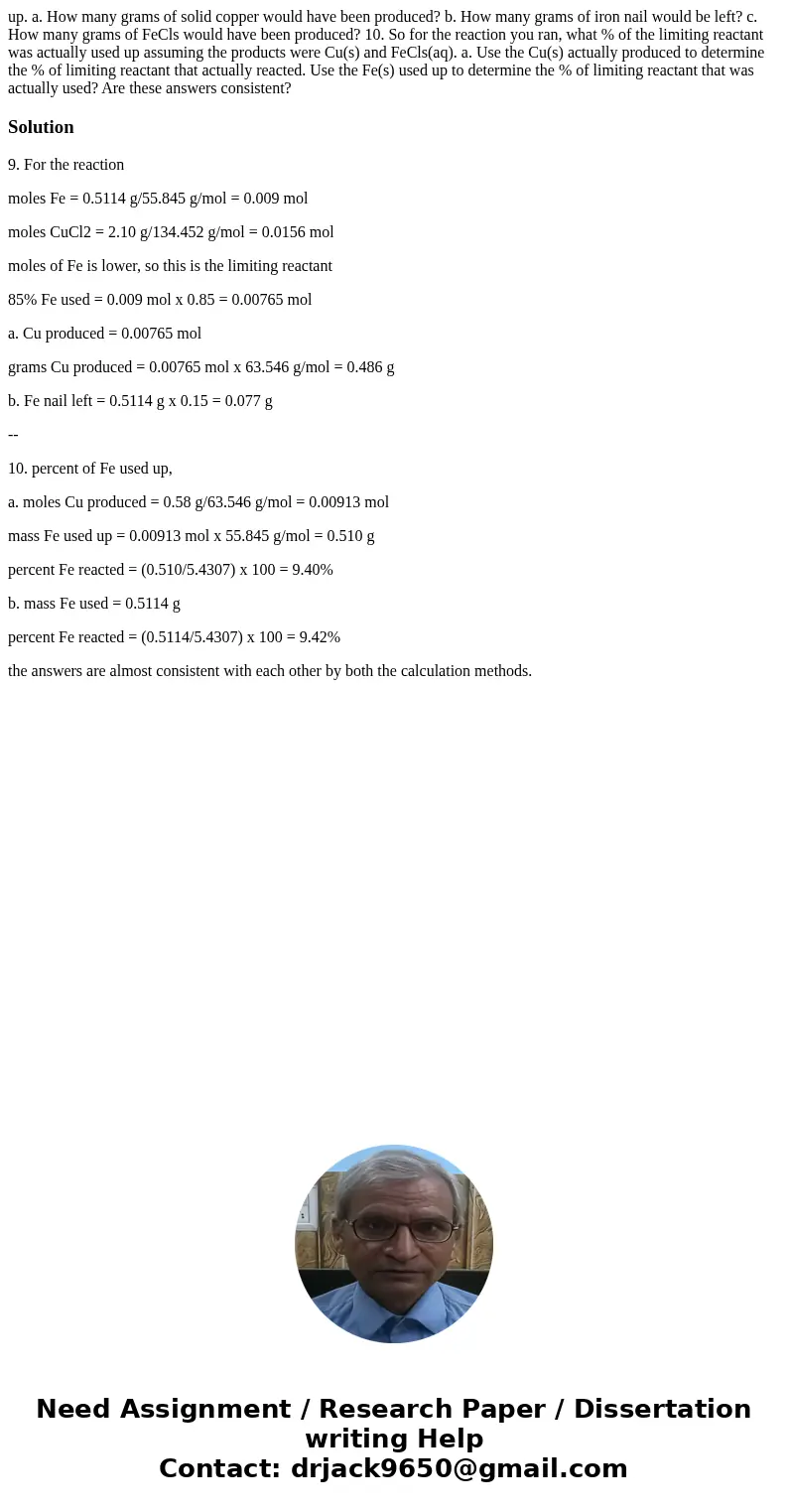up a How many grams of solid copper would have been produced
up. a. How many grams of solid copper would have been produced? b. How many grams of iron nail would be left? c. How many grams of FeCls would have been produced? 10. So for the reaction you ran, what % of the limiting reactant was actually used up assuming the products were Cu(s) and FeCls(aq). a. Use the Cu(s) actually produced to determine the % of limiting reactant that actually reacted. Use the Fe(s) used up to determine the % of limiting reactant that was actually used? Are these answers consistent? 
Solution
9. For the reaction
moles Fe = 0.5114 g/55.845 g/mol = 0.009 mol
moles CuCl2 = 2.10 g/134.452 g/mol = 0.0156 mol
moles of Fe is lower, so this is the limiting reactant
85% Fe used = 0.009 mol x 0.85 = 0.00765 mol
a. Cu produced = 0.00765 mol
grams Cu produced = 0.00765 mol x 63.546 g/mol = 0.486 g
b. Fe nail left = 0.5114 g x 0.15 = 0.077 g
--
10. percent of Fe used up,
a. moles Cu produced = 0.58 g/63.546 g/mol = 0.00913 mol
mass Fe used up = 0.00913 mol x 55.845 g/mol = 0.510 g
percent Fe reacted = (0.510/5.4307) x 100 = 9.40%
b. mass Fe used = 0.5114 g
percent Fe reacted = (0.5114/5.4307) x 100 = 9.42%
the answers are almost consistent with each other by both the calculation methods.

 Homework Sourse
Homework Sourse